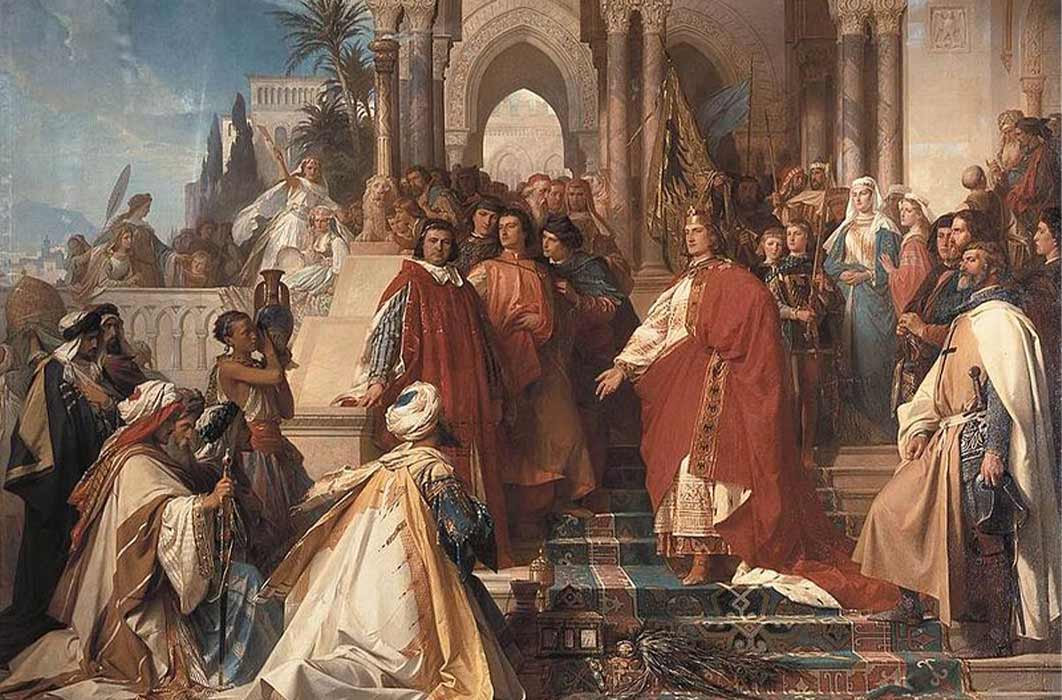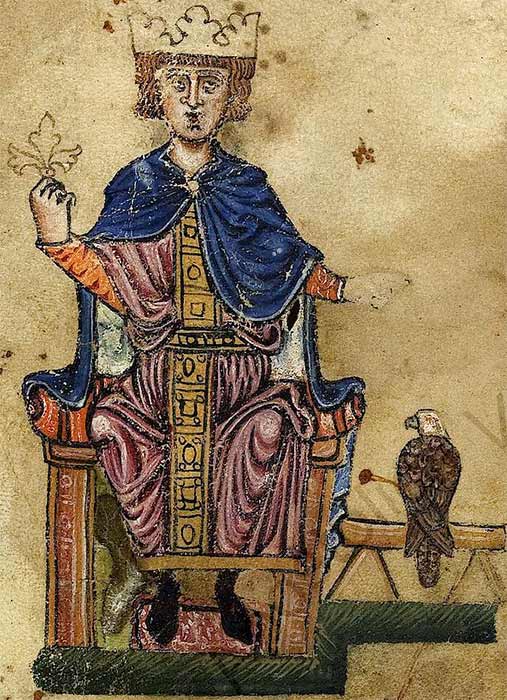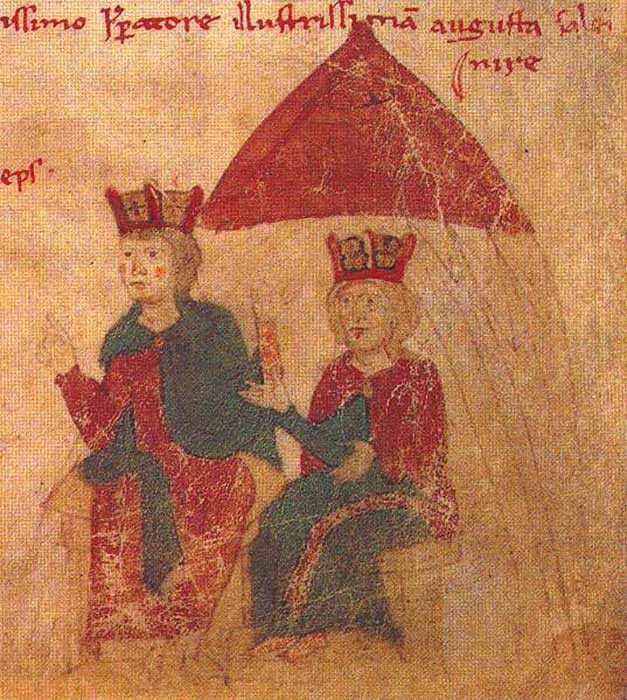
The Wonder Of Holy Roman Emperor Frederick II Stupor Mundi
Holy Roman Emperor Frederick II (1194-1250) was known as the Wonder of the World, Stupor Mundi, because there had never been anyone like him; nor will there ever be another to match him. Like many Medieval kings he ruled as a skilled soldier, diplomat and excellent administrator, but he was also a gifted writer, a sensitive poet, a patron of the arts and learning, who dazzled all with his charismatic charm. Frederick was not tall but well-built with blond-red hair, green eyes, clean-shaven and handsome. He had a natural talent for showmanship and acted as a demigod to whom the accepted rules of conduct did not apply. When traveling the Emperor was escorted by his turbaned Saracen bodyguards brandishing burly beards and carrying fearsome scimitars; his impressive Teutonic knights and a menagerie of exotic animals. Frederick was accused of being an Islamophile and traitor to the Christian cause. Like his grandfather King Roger II, he too was called ‘half-heathen’, more a Saracen sultan than a Christian king.

Portrait of Frederick II from the "Manfred manuscript" (Biblioteca Vaticana, Pal. lat 1071) of De arte venandi cum avibus. (Public Domain)
Frederick’s Royal Lineage
Frederick descended from a line of royal ancestors, with roots at the extreme ends of Europe; from Germania in the north through Italy and down to Sicily in the south. Frederick’s maternal grandfather was one of the most successful, wealthy and controversial Medieval kings, King Roger II (1095-1154) ruler of Sicily and Southern Italy. His supremacy had rocketed Sicily to its apex of wealth, culture, prestige and refinement by the 12th century.

Frederick Barbarossa, middle, flanked by two of his children, King Henry VI (left) and Duke Frederick VI (right). From the Historia Welforum. (Public Domain)
Frederick’s paternal grandfather was Frederick I Barbarossa (Red Beard), Duke of Swabia and Holy Roman Emperor. He possessed a commanding Teutonic majesty and lordly manner; leading Germany to thrive and became a mighty force in Europe. His reputation for ruthlessness was superseded by the great esteem his troops and his country held for him.
Constance De Hauteville, Frederick’s Mother
After King Roger II’s death, Sicily was ruled by his son William I ‘the bad’ and grandson, William II ‘the good’. King Roger also had a daughter, Constance, (1154 – 1197) who was born just after his death. Blond and attractive she had been living in a convent all her adult life; some say for protection; others say by choice. Reluctantly, at the age of 32 years she was removed from the solitude of her sheltered life by her nephew King William II who was close to her own age. He married her off to Holy Emperor Frederick I Barbarossa’s son, Henry VI Hohenstaufen, ten years her junior. Why William had plucked her from the convent to marry a German prince, whom the cultivated Sicilians considered barbarian, still has historians guessing. Henry VI was well-educated but considered cruel and untrustworthy, never admired like his more appealing father, the Holy Roman Emperor Barbarossa. King William II had ensured that the rights of Constance would be upheld but those rights passed to her new husband Henry, who was most anxious to acquire them.

Henri VI and Constance de Hauteville (Public Domain)




